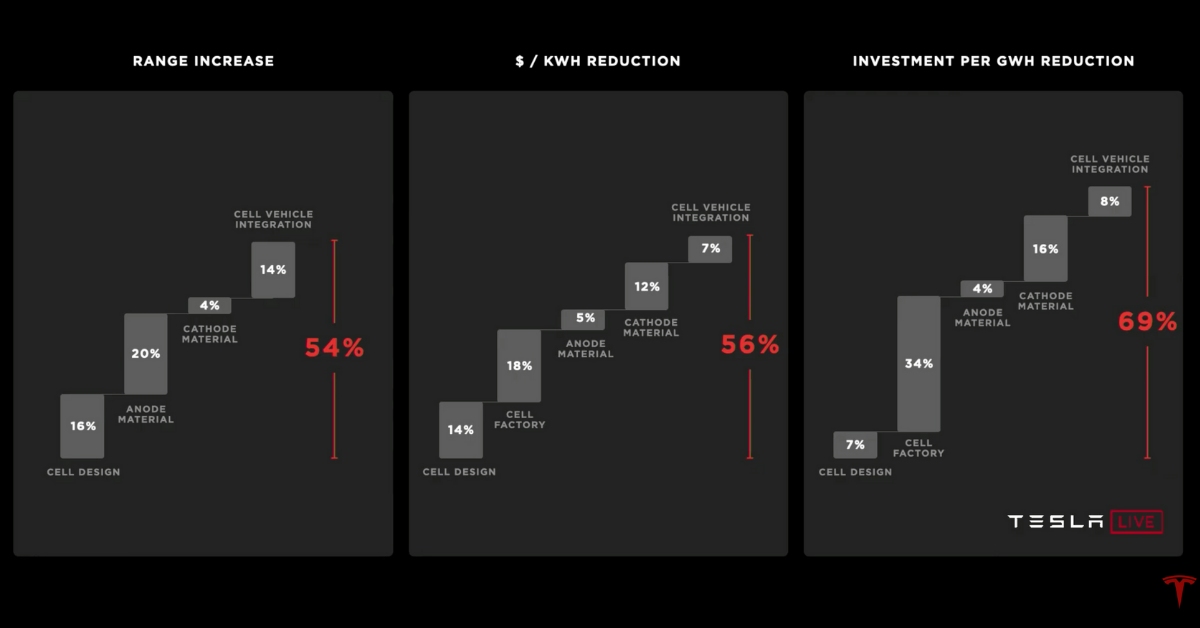Tesla shares traded down about 7% following Battery Day. That shouldn’t be a surprise, as the stock’s vertical move over the past year sets the stage for investors to expect immediate results. What they got instead was a 3-year plan. While it will take time, the event delivered on substance for the following three reasons:
- In the next 3-5 years, Tesla will add “Model 2,” a $25k vehicle, expanding EV’s addressable market.
- The company can offer this lower-priced car in part because of proprietary battery chemistry and battery manufacturing advancements.
- Most importantly, Tesla’s vertical integration flywheel will drive down costs, lower vehicle prices, and increase demand. In the end, it will be progressively more difficult for traditional auto to compete.
Other takeaways
- Tesla is standing by its 2020 delivery target of about 500k vehicles, up 30-40% from 2019.
- The company’s goal is to eventually (in 10-20 years) produce 20m cars and light trucks per year, implying a roughly 22% global market share.
- Model 2 will be available with full autonomy within the next three years. While we believe the advertised $25k starting price is likely five years away, it will eventually reach that goal, which is 30% less than the average new car price in the US today.
- While the event was technical in nature, the takeaway is that batteries are difficult, and Tesla has an advantage when it comes to battery chemistry, manufacturing, and the software that runs it.
- The company’s vertical integration approach is expanding to include lithium extraction and battery recycling.
- Traditional auto is betting on Panasonic to supply its batteries, while Tesla is betting on itself.
- The company wants to achieve 5x-10x more output per manufacturing square foot compared to other automakers.
- New markets that Tesla could enter were teased, including HVAC and aerospace. Both are examples of Tesla taking its existing auto tech and applying it to new markets, which means more revenue.
